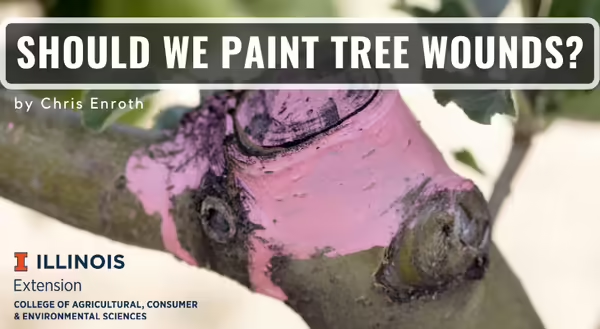
I spend a lot of time asking homeowners to show me their tree butts. Buttress to be specific, but industry lingo shortens it to butt and is described as the dramatic widening of the lower trunk. The buttress of a tree is located beginning at the root flare where the base of the trunk flares out into the root system. How high up the buttress goes depends on the species. For oaks, it may only be two or three foot high. Some tropical trees have buttresses that go up twenty feet!
Tree Injury
Having the root flare exposed above ground is critical for the long-term health of your trees. Very often trees are planted too deep leading to butt rot. Yes, that is an actual term uttered at arborist conferences and not a single person cracks a smile. This is serious stuff.
This year, I’ve seen a lot of injuries occur along the buttress leading to the decline and in some cases death of a tree. It is the buttress and root flare that so often comes in contact with mowers and string trimmers. The buttress is a critical area to avoid wounding as it connects the root system to the canopy. The tissue conveying water, nutrients, and carbohydrates up and down the tree is right behind the bark and when we sever or damage that tissue it creates an open wound for fungi, bacteria, and insects to access the trunk and then, you guessed it, butt rot.
Tree injury is not confined to the buttress. Homeowners deal with gashes caused by squirrels, overly ambitious gardeners with saws, storms that snap off huge limbs, and so many other errant tree injuries. What type of first aid should we be providing these trees whether it is at the buttress or up in the canopy? Should we seal tree wounds?
Treating the injury
Humans' first inclination is dressing the wound by painting it with some type of paint or sealer. After all, it works for us! A scratch on a human form a scab and often new skin tissue forms over top that scab. A bandage helps protect that area while the wound heals. But trees aren’t humans. Believe me, I checked. Trees do not heal wounds. A tree seals off the wound with wound tissue.
Wound tissue is different than the original tissue. Once the original tissue is lost in a wound, it is gone for good. The tree responds by developing wound tissue to wall off the injury. Wound tissue is usually smoother and different in color than the normal tissue.
Oxygen is critical for the development of wound tissue to seal off a nasty gash in a trunk or branch. By painting wound sealers over the cut or damaged portion of the tree, we are hindering the process for that wound tissue to develop. Plus, we may be sealing rot organisms against the open wound. Some fungi and bacteria are even attracted to wound sealing materials.
All that said there are moments when wound sealing can be employed such as having a large wound on an oak created during the summer which may attract insects carrying oak wilt. Ideally, any intentional wounds to the oak tree should be made in the winter when insects aren’t active. Typically, the recommendation is still to skip the wound sealer and paint the damaged area with an appropriate insecticide or fungicide.
So, should we be painting wound sealer on our pruning cuts, mower damage, or storm damaged portion of our trees? In most cases, the answer is “No.”
Now it is back to looking at pictures of tree butts. Some jobs have all the perks!
Good Growing Tip of the Week: If a gardener feels the need to clean up a tree wound, use sterilized pruning tools to clean up any ragged damaged portions of the tree. Frankly, this is work best suited to a certified arborist.
Want to get notified when new Good Growing posts are available? SIGN UP HERE!
Reference - How Plants Work: The science behind the amazing things plants do, by Linda Chalker-Scott, 2015